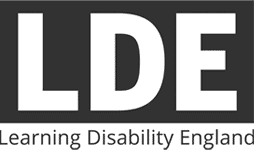Anne-Marie Glasby – Senior Development Officer, Changing Our Lives
“Change will not come if we wait for some other person or some other time. We are the ones we’ve been waiting for. We are the change that we seek.” (Barack Obama)
As I write this, yet another abuse scandal is unfolding in a long-stay setting – Yew Trees. This comes after the abuses uncovered at Whorlton Hall and Winterbourne View – both exposed by undercover Panorama investigations rather than by health and social care systems. Before that, there was Cornwall, and long before there was Ely Hospital (1967), with many more scandals in between. After each scandal is discovered there is understandable outrage, a report and renewed efforts to change policy and move people out of these institutions where it can seem that abuse is rife.
Following Winterbourne View, the government introduced the Transforming Care programme, the aim of which was to move people out of long-stay and in-patient settings into their own home in the community. There is much to be said about this programme – with over 2000 people with learning disabilities and autistic people still locked up in in-patient settings – but that is not for this blog. However, the risks faced by these 2000 people could just be the tip of the iceberg if we don’t ask more fundamental questions about why abuse and poor care occur in the first place (and if we only focus on long-stay settings).
While it is crucial that people with learning disabilities and autistic people are able to live independent lives in the community, and while closing long-stay hospitals is absolutely the right thing to do – this won’t be enough without a change in the underlying mindset and values of many who support them and wider society. Over time, we’ve learnt that key risk factors include things like:
- The isolated nature of services
- Closed, institutional settings and a tendency to suppress complaints
- Staff shortages, high use of bank and agency staff, and inadequate training
- Poor leadership and supervision
However, perhaps most difficult to challenge and change are the values and attitudes of staff which lead to institutionalised behaviour and the degradation and dehumanisation of the very people they are employed to support. This might be more likely to happen in situations where people are locked away, out of sight and out of mind – but our experience is that it can also happen in some community settings and even in people’s own homes. It is not uncommon for us to hear staff referring to people in a degrading or dehumanising way: “We put him in his room in the afternoon, sometimes we put him outside”, “Listen to the question this lady’s asking you and stop being silly.” And we frequently come across situations where what is possible for someone is geared around the needs and wishes of staff rather than those of the person they are paid to support, further reinforcing a power imbalance.
The risk factors outlined above are not confined to in-patient settings. A day service or residential home could be situated in the heart of a town or city but if no one ever enters the building other than people who attend, staff who work there and occasional visitors for meetings then it remains as isolated as a hospital in the middle of nowhere. The current workforce crisis affects all parts of the system. And crucially, until people are seen as equal by society and by those who are paid to support them, it doesn’t matter where they live or which services they attend – they will always remain at risk of abuse.
We didn’t stop abuse and exploitation by locking people away from these dangers, and we may not stop them just by letting people out again. Ultimately, what keeps us all safe is having choices, being in control of our lives and having people around us who know us and value us.
Nearly 20 years ago, the landmark White Paper, Valuing People, led to significant improvements in services for people with learning disabilities – but two decades later, do we really value people enough?





